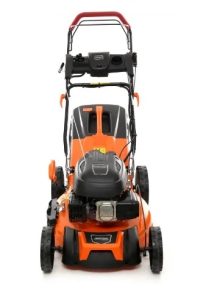
First of all, imagine that your lawn is tended to by a tireless gardener who quietly and carefully cuts the grass while you are resting or doing other things. This is how a robotic lawn mower works – autonomously and without unnecessary noise. Thanks to technological advances, such devices are no longer a novelty, becoming a practical assistant for those who value time and want to always have a well-groomed lawn without much effort. In this article, TechnoVisor will look at how modern robotic lawn mowers are changing the approach to lawn care, their main advantages, and what to look for when choosing one.
Features of modern models
In the spotlight, models like the Segway Navimow X3 use built-in sensors that allow them to navigate difficult areas without traditional boundary wires. Because of this precision, the robot doesn’t get stuck in corners and can cover large areas of up to several thousand square meters in a single cycle, depending on the configuration of your garden. And the Honda Miimo model has an adaptive schedule – a smart timer adjusts the mowing schedule to the weather to avoid drying out the grass or trampling it after rain.
Benefits and safety
It should be emphasized that these smart mowers are safety-oriented – they have, as we said above, sensors to avoid objects, so they do not harm paths, lawn furniture, or pets. When the robot encounters an unfamiliar object on its way, it will simply carefully avoid it or change course. Some models even recognize tall flowers and can adjust their trajectory to avoid damaging flower beds.
And for those who love smart home, there is integration with voice assistants/mobile apps – just ask Google Assistant to start or pause the robot, check the battery status, or receive a notification when the session is over. In addition, GPS tracking tracks the location in case of suspected theft, and built-in alarms notify the owner if the robot is removed from the lawn without his knowledge.
An undeniable advantage is the accuracy and care of the grass cover. The new technology for creating a cover layer shreds the cut grass into small particles, which decompose on the soil, enriching it with nutrients. This way, the lawn looks healthier without additional fertilizers. The robots themselves work regularly and in small portions, which prevents plant stress – the blades of grass always remain at the optimum height. In general, most robotic lawn mowers are characterized by the ease of setting the boundaries within which they will work. Although earlier, a boundary wire was widely used for this purpose, modern models provide more convenient solutions – wireless fencing with GPS navigation. For example, the same Segway Navimow X3 can determine the boundaries with centimeter accuracy in real time, using data from satellite navigation systems and visual data, so it is no longer necessary to run a wire across the entire lawn. However, if the area is complex with many small zones, you may need to manually set up the points in the app so that the robot knows where to go.
Work on different terrains and in different seasons
When it comes to terrain, robotic mowers have no problem working on slopes of up to 27 degrees and overcome bumps with advanced chassis and drive systems. If your lawn has hills or wild landscaping, look for versions with all-wheel drive or at least large wheels.
Yes, these little helpers can continue to work even in the rain, as the housings themselves are protected from splashes and light humidity. However, the best practice is not to run the device in heavy rain to avoid excessive stress on the motor. Some models have automatic weather detection: if it starts to rain, the robot will return to the base and resume mowing when the soil dries.
Autonomy and model selection
And let’s not forget about modern batteries, which allow mowers to get back to work quickly. Nowadays, it only takes a few hours at a charging station to fully recharge the battery and get the robot ready for the next mowing session.
What to choose in the end? For example, if you have a small lawn, a convenient basic model with a boundary wire and simple setup will be relatively inexpensive. For medium-sized areas, the Honda Miimo is a good choice. Owners of large spaces should consider the Segway Navimow X3 or the professional versions of the Husqvarna Automower IQ, which can work on hundreds or even thousands of square meters without constant supervision. Then, after installing the base station and setting up the GPS zone, give the robot time to learn the lawn – it’s best to plan the first sessions under supervision to make sure it goes around all corners and doesn’t miss zones. Once the algorithms have adapted, it will work virtually without your input.
By purchasing a robotic mower, you are investing not only in convenience, but also in enhancing the aesthetic appeal of your yard. It frees up time for more important things, keeps your grass healthy, and fits in with a modern lifestyle where technology helps with daily routines.

